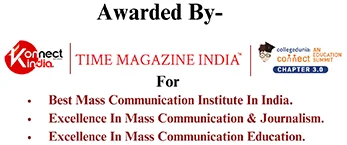History of Mass Media in India
BackThe history of mass media in India can be traced back to the late 18th century when the first newspaper, The Bengal Gazette, was published in 1780 by James Augustus Hickey. However, it was only in the 19th century that the mass media gained significant momentum with the introduction of the printing press and the increasing literacy rates among the people.
During the British colonial period, newspapers played a crucial role in disseminating information and shaping public opinion. The first Indian language newspaper, Samachar Darpan, was published in Bengali in 1818. In 1857, during the Indian Rebellion, newspapers played a critical role in spreading news and views among the masses.
The 20th century saw the emergence of new forms of mass media such as radio, cinema, and television. Radio broadcasting started in India in 1927 with the establishment of the Indian Broadcasting Company. The All India Radio (AIR) was established in 1936 and it became the main source of information and entertainment for the masses. Cinema, too, became a popular form of mass media, with the first Indian feature film, Raja Harishchandra, being released in 1913. Television broadcasting began in India in 1959 with the launch of Doordarshan.
In the post-independence period, mass media in India underwent significant changes with the emergence of private media companies and the liberalization of the media industry. The 1990s saw the emergence of satellite television, which brought in a new era of 24-hour news channels and entertainment channels. The rise of the internet and social media in the 21st century has further transformed the mass media landscape in India, with online news portals and social networking sites becoming popular sources of information and communication.
Today, mass media in India is a diverse and vibrant industry, with a large number of newspapers, magazines, radio stations, television channels, and online media outlets catering to different segments of the population.
Indian Media consist of several different types of communications: television, radio, cinema, newspapers, magazines, and Internet-based Web sites/portals. Indian media was active since the late 18th century with print media started in 1780, radio broadcasting initiated in 1927, and the screening of Auguste and Louis Lumière moving pictures in Bombay initiated during the July of 1895. It is among the oldest and largest media of the world. Media in India has been free and independent throughout most of its history, even before establishment of Indian empire by Ashoka the Great on the foundation of righteousness, openness, morality and spirituality. The period of emergency (1975–1977), declared by Prime Minister Indira Gandhi, was the brief period when India's media was faced with potential government retribution.
History Of Journalism & Mass Communication in India
The country consumed 99 million newspaper copies as of 2007 - making it the second largest market in the world for newspapers. By 2009, India had a total of 81,000,000 Internet users - comprising 7.0% of the country's population, and 7,570,000 people in India also had access to broadband Internet as of 2010 - making it the 11th largest country in the world in terms of broadband Internet users. As of 2009, India is among the 4th largest television broadcast stations in the world with nearly 1,400 stations. Snapshot of evolution of media in India is as below:
Mass media in India - Bengal: The Bengal Gazette was started by James Augustus Hicky in 1780. The Gazette, a two-sheet newspaper, specialised in writing on the private lives of the Sahibs of the Company. He dared even to mount scurrillious attacks on the Governor-General, Warren Hastings', wife, which soon landed "the late printer to the Honourable Company" in trouble.
Hicky was sentenced to a 4 months jail term and Rs.500 fine, which did not deter him. After a bitter attack on the Governor-General and the Chief Justice, Hicky was sentenced to one year in prison and fined Rs.5,000, which finally drove him to penury. These were the first tentative steps of journalism in India. Mass media in India - Calcutta: B.Messink and Peter Reed were pliant publishers of the India Gazette, unlike their infamous predecessor. The colonial establishment started the Calcutta Gazette. It was followed by another private initiative the Bengal Journal. The Oriental Magazine of Calcutta Amusement, a monthly magazine made it four weekly newspapers and one monthly magazine published from Calcutta, now Kolkata.
Mass media in India - Madras Chennai: The Madras Courier was started in 1785 in the southern stronghold of Madras, which is now called Chennai. Richard Johnson, its founder, was a government printer. Madras got its second newspaper when, in 1791, Hugh Boyd, who was the editor of the Courier quit and founded the Hurkaru. Tragically for the paper, it ceased publication when Boyd passed away within a year of its founding.
It was only in 1795 that competitors to the Courier emerged with the founding of the Madras Gazette followed by the India Herald. The latter was an "unauthorised" publication, which led to the deportation of its founder Humphreys. The Madras Courier was designated the purveyor of official information in the Presidency. In 1878, The Hindu was founded, and played a vital role in promoting the cause of Indian independence from the colonial yoke. It's founder, Kasturi Ranga Iyengar, was a lawyer, and his son, K Srinivasan assumed editorship of this pioneering newspaper during for the first half of the 20th century. Today this paper enjoys the highest circulation in South India, and is among the top five nationally.
Mass media in India - Bombay: Bombay, now Mumbai, surprisingly was a late starter - The Bombay Herald came into existence in 1789. Significantly, a year later a paper called the Courier started carrying advertisements in Gujarati.
The first media merger of sorts: The Bombay Gazette, which was started in 1791, merged with the Bombay Herald the following year. Like the Madras Courier, this new entity was recognised as the publication to carry "official notifications and advertisements". 'A Chronicle of Media and the State', by Jeebesh Bagchi in the Sarai Reader 2001 is a handy timeline on the role of the state in the development of media in India for more than a century.
Bagchi divides the timeline into three 'ages'. The Age of Formulation, which starts with the Indian Telegraph Act in 1885 and ends with the Report of the Sub-Committee on Communication, National Planning Committee in 1948.
Role of mass media
State of Modern Mass Media: After Independence, the Indian media had evolved, realigned and reinvented itself to a large extent, and now-a-days you can see a clear division between commercial and aesthetic expressions of our Media Giants, sometimes arbitrary. Modern mass communication media is poles apart relative to any aesthetic feeling: vulgarity and arrogance nullify any hypothesis of meaning. Aesthetics is the more powerful answer to violence of modern mass communication. Today’s mass communication media seems to elude every determination, exposing its message to all possible variants, it finishes to abolish it. Goal of mass communication is always the unbiased dissipation of any content, and the world wide web is no exception, and surely is the most efficient media tool.
It’s also very interesting to observe how the old media are becoming more and more permeable to blogs and D.I.Y. information. This phenomenon is not due to a fascination in more democratic information sources. On the contrary - the pressure is rising due to the growth of the eyes’ (cameras and new digital devices) that are watching the same events that mainstream media are reporting to us: the possibility of being uncovered are too many and broadcast journalists are forced to tell the truth (or at least a plausible version of it). As a consequence, blogs have become the major source of news and information about many global affairs. We also have to consider that bloggers are often the only real journalists, as they (at their own risk) provide independent news in countries where the mainstream media is censored, biased or under control.


